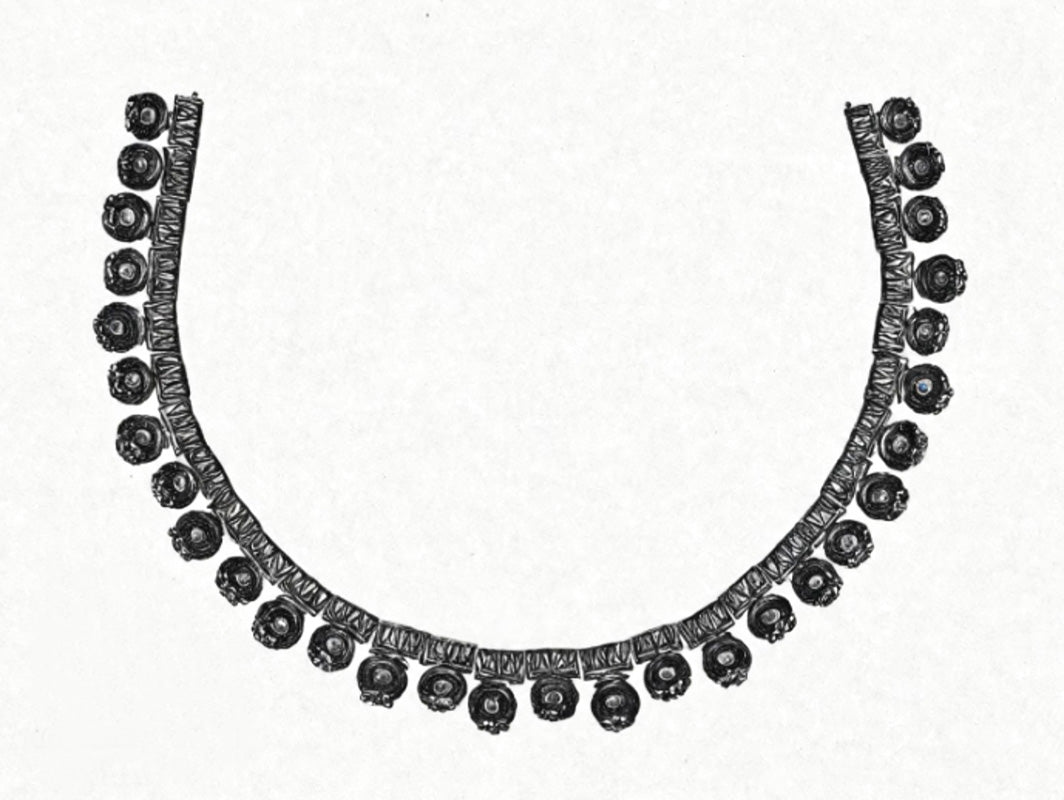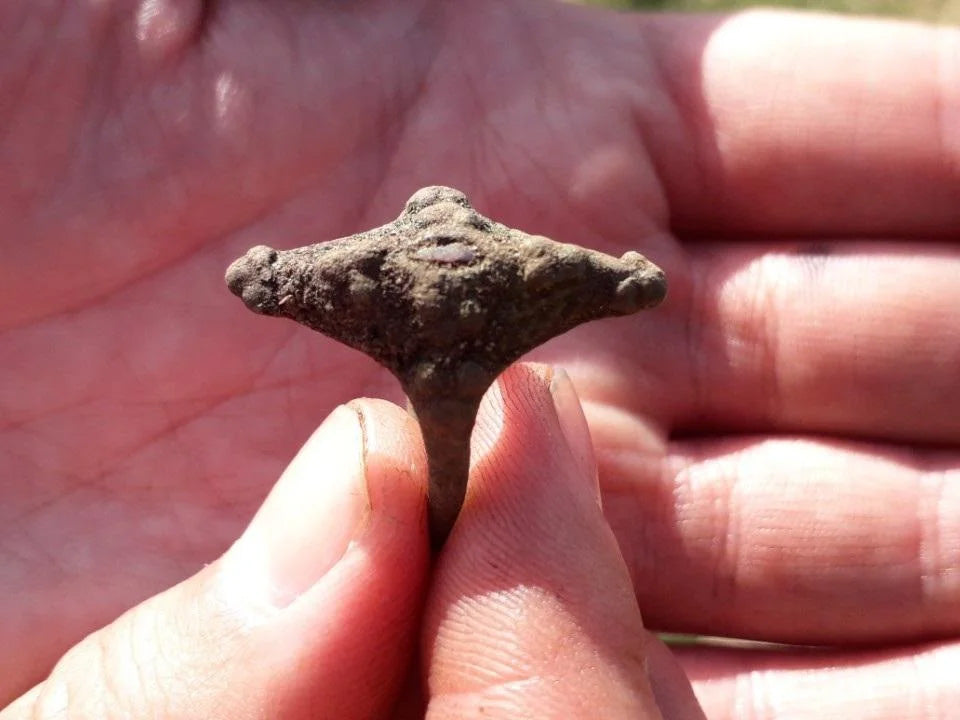
Boston Museum Returns a 2,500-Year-Old Carnelian Gold Ancient Necklace to Turkey
The Museum of Fine Arts (MFA) Boston has returned a 2,500-year-old gold necklace to Turkey, marking a significant step in the ongoing efforts to repatriate stolen cultural artifacts.
This artifact, featuring exquisite craftsmanship with gold and dark orange carnelian stone, dates back to between 550 and 450 BCE. Acquired by the MFA in 1982 without provenance records, the necklace's origins were eventually traced back to an ancient tomb in Turkey, raising critical questions about its acquisition.
Historical Significance
- The necklace is not merely an artifact but a piece of history that offers insight into ancient Anatolian culture.
- Its return not only rectifies past wrongs but also restores a valuable part of Turkey's cultural heritage.
Cultural Heritage Preservation
- The repatriation underscores the importance of preserving cultural heritage and maintaining ethical standards in museum practices.
- Museums worldwide are increasingly scrutinized for their acquisition histories, prompting a shift towards greater transparency and accountability.
In this context, the return of this necklace symbolizes a broader movement aiming to address historical injustices and promote ethical stewardship of cultural properties.

A sketch drawing of the actual necklace
Unraveling the History of the Necklace
The gold necklace is a testament to ancient craftsmanship, featuring intricate designs and the use of precious materials. The combination of lustrous gold and a vibrant carnelian stone highlights the artisan's skill and the value placed on luxury items in the period. The necklace's design, with finely wrought links and a central carnelian pendant, showcases the aesthetic preferences of its time.
The necklace is believed to originate from the Bintepeler archaeological site, renowned for its extensive tumuli. Following reports of looting in 1976, the archaeological museum in Manisa, Türkiye, conducted excavations at a tumulus near Kendirlik. During these excavations, archaeologists unearthed beads and other ornaments closely resembling those on the MFA necklace, suggesting a common origin. The items recovered then are now preserved at the Manisa Museum. In contrast, the necklace in question seems to have been smuggled out of the country shortly thereafter.
Dating back to 550–450 B.C.E., this artifact holds significant historical context. It originates from ancient Anatolia, a region known for its rich cultural tapestry and advanced metallurgical practices. The gold and carnelian used in the necklace were likely symbols of wealth and status, worn by individuals of high rank or during important ceremonial events.
In ancient Anatolia, jewelry was more than mere decoration—it carried cultural and possibly spiritual significance. The carnelian stone, often associated with protection and vitality, added an extra layer of meaning to the piece. Such artifacts offer invaluable insights into the social structures, artistic achievements, and daily lives of people from that era.
The necklace’s journey through time underscores its importance as a cultural relic. Each detail— from the fine gold work to the carefully chosen carnelian—reflects the artistry and values of ancient Anatolian society.
The Path to Repatriation: A Collaborative Effort
Acquisition by MFA Boston in 1982 and lack of provenance records raising concerns about potential looting.
The Museum of Fine Arts (MFA) Boston bought the 2,500-year-old necklace from a London dealer in 1982. This acquisition lacked any concrete provenance records, immediately raising red flags about its origins. Concerns about potential looting were not unfounded, given the historical context of art smuggling during that era.
Role of scholarly research in uncovering the necklace's true history and establishing its link to illicit excavations.
Scholarly intervention played a pivotal role in this case. An anonymous scholar suggested a thorough investigation into the necklace's provenance just before the COVID-19 pandemic. This suggestion catalyzed an internal review by the MFA, which eventually concluded that the necklace likely originated from Asia Minor and had been smuggled out of Turkey decades ago.
Evidence from Turkish Archaeological Sites
Comparison with artifacts found in Turkish archaeological museums, highlighting similarities that strengthen the case for looting. Comparative analysis between the MFA Boston necklace and similar artifacts housed in Turkish archaeological museums, particularly those in Manisa, revealed striking similarities. These findings bolstered suspicions that the necklace was part of a larger cache of items looted from Turkey.
Excavation history and reports of looting incidents from 1976, which align with the timeframe when the necklace was likely taken. The Bintepeler Necropolis Area is crucial here. Reports indicate that parts of the necklace were unearthed during excavations at this site in 1976. This aligns with documented looting incidents, providing a strong basis for believing that the necklace was illicitly removed from Turkey around this period.
The deaccessioning process at MFA Boston underscores a shift towards more ethical museum practices. By thoroughly investigating and subsequently deciding to return the artifact, MFA Boston has set a precedent for cultural accountability and transparency in museum acquisitions.
A New Era for Museum Practices: Embracing Cultural Accountability
Museum practices have undergone significant changes since the 1980s, mainly driven by a growing awareness of colonial legacies. Institutions are increasingly prioritizing acquisition and provenance transparency to address past injustices. This shift is crucial as it helps ensure that the artifacts displayed are ethically sourced and legally obtained.
Pressure on Institutions
The global pressure on museums to repatriate stolen artifacts has never been higher. High-profile cases like the return of MFA Boston's ceramic child’s coffin highlight this trend. These instances emphasize the need for museums to scrutinize their collections and take responsibility for items acquired under dubious circumstances.
Navigating Challenges: The Dark Side of Art Trade
Tracing the origins of artifacts can be incredibly challenging, particularly those acquired during less scrupulous times when ethical standards were often disregarded. Many pieces in museum collections lack comprehensive provenance records, making it difficult to determine their legality.
Impact of Art Smuggling Networks
Art smuggling networks have significantly impacted cultural heritage preservation efforts. These clandestine operations often result in the looting of archaeological sites, depriving nations of their historical treasures. To combat this issue, robust international cooperation is essential. Enhanced collaboration between countries can help track down and repatriate stolen artifacts, ensuring they are returned to their rightful homes.
Ethical Considerations
As awareness grows regarding historical crimes related to artifact acquisition, museums around the world are reevaluating their policies. Ethical considerations now play a pivotal role in how institutions manage their collections. By adopting rigorous provenance practices, museums can help preserve cultural heritage and promote historical justice.
This ongoing journey toward justice for looted artifacts is not just about righting past wrongs; it's about setting a precedent for future generations. Museums must lead by example, embracing transparency and accountability to foster a more equitable future for cultural heritage.
By addressing these points, museums worldwide can not only correct historical wrongs but also pave the way for more ethical practices in the future.
Looking Ahead: A Call to Action for Museums Worldwide
The return of the 2,500-year-old necklace by MFA Boston is a significant moment for museums globally. It highlights the importance of museums in returning cultural treasures and protecting cultural heritage.
Why Provenance Matters
Encouraging institutions to adopt more rigorous provenance practices is essential for ensuring a more equitable future for cultural heritage. Establishing thorough protocols and maintaining transparent acquisition records are vital steps in this direction. The case of MFA Boston, which involved internal reviews and collaboration with Turkish officials, sets a precedent for other museums.
Key Areas of Focus
To build a fairer future for cultural heritage, museums must prioritize the following:
- Provenance Research: Enhanced scholarly research and cooperation with source countries can uncover the true origins of artifacts.
- Legal Frameworks: Creating and adhering to international agreements can streamline the repatriation process.
- Ethical Standards: Implementing stringent ethical standards in acquisitions will prevent future instances of looting and illicit trade.
These proactive measures are crucial for the future of repatriation efforts, ensuring that cultural artifacts are returned to their rightful homes. By embracing these practices, museums worldwide can contribute significantly to the preservation of our shared human history.
VIEW OUR COLLECTION OF ANTIQUE & VINTAGE JEWELRY
VIEW OUR JOURNAL & NEWS
READ OUR INTERESTING FACTS ARTICLES

















